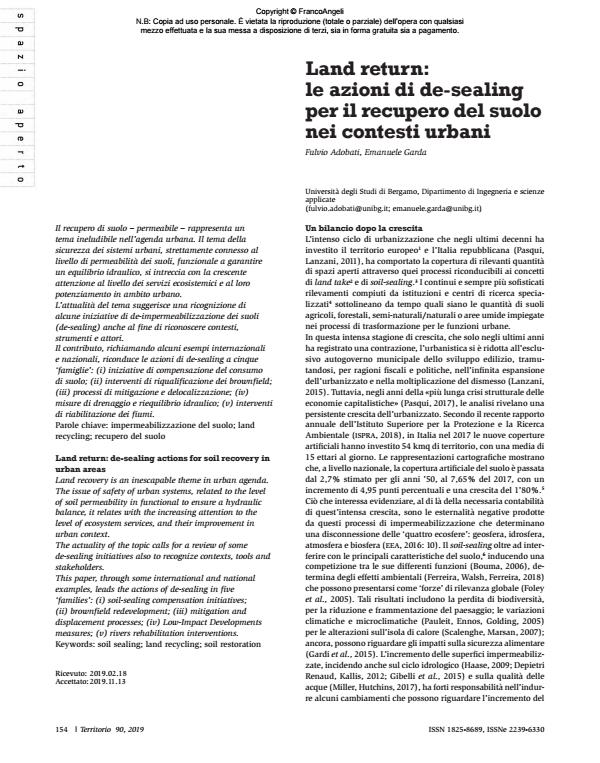Land return: le azioni di de-sealing per il recupero del suolo nei contesti urbani
Titolo Rivista TERRITORIO
Autori/Curatori Fulvio Adobati, Emanuele Garda
Anno di pubblicazione 2020 Fascicolo 2019/90
Lingua Italiano Numero pagine 9 P. 154-162 Dimensione file 167 KB
DOI 10.3280/TR2019-090017
Il DOI è il codice a barre della proprietà intellettuale: per saperne di più
clicca qui
Qui sotto puoi vedere in anteprima la prima pagina di questo articolo.
Se questo articolo ti interessa, lo puoi acquistare (e scaricare in formato pdf) seguendo le facili indicazioni per acquistare il download credit. Acquista Download Credits per scaricare questo Articolo in formato PDF

FrancoAngeli è membro della Publishers International Linking Association, Inc (PILA)associazione indipendente e non profit per facilitare (attraverso i servizi tecnologici implementati da CrossRef.org) l’accesso degli studiosi ai contenuti digitali nelle pubblicazioni professionali e scientifiche
Il recupero di suolo - permeabile - rappresenta un tema ineludibile nell’agenda urbana. Il tema della sicurezza dei sistemi urbani, strettamente connesso al livello di permeabilità dei suoli, funzionale a garantire un equilibrio idraulico, si intreccia con la crescente attenzione al livello dei servizi ecosistemici e al loro potenziamento in ambito urbano. L’attualità del tema suggerisce una ricognizione di alcune iniziative di de-impermeabilizzazione dei suoli (de-sealing) anche al fine di riconoscere contesti, strumenti e attori. Il contributo, richiamando alcuni esempi internazionali e nazionali, riconduce le azioni di de-sealing a cinque ‘famiglie’: (i) iniziative di compensazione del consumo di suolo; (ii) interventi di riqualificazione dei brownfield; (iii) processi di mitigazione e delocalizzazione; (iv) misure di drenaggio e riequilibrio idraulico; (v) interventi di riabilitazione dei fiumi.
Parole chiave:Impermeabilizzazione del suolo; land recycling; recupero del suolo
- Investigating preferences for soil desealing: insights from citizens for sustainable urban planning in Parma, Italy Ilaria De Noia, Peter van der Waerden, Astrid Kemperman, Michele Zazzi, in European Planning Studies /2026 pp.21
DOI: 10.1080/09654313.2025.2575794
Fulvio Adobati, Emanuele Garda, Land return: le azioni di de-sealing per il recupero del suolo nei contesti urbani in "TERRITORIO" 90/2019, pp 154-162, DOI: 10.3280/TR2019-090017